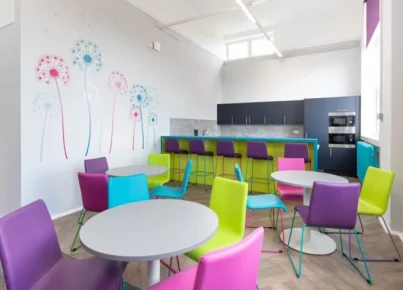You want to be a transformational leader, capable of helping your school reach the pinnacle of success and innovation. To accomplish this, you need to be a visionary, capable of visualizing what you want your school to become, and crafting a strategic plan that will get you there in increments. Periodically, you can break out your strategic plan, and check the progress that you have made.
For instance, you may have a vision for a new state of the art, multipurpose stadium that can house football, baseball, soccer, lacrosse, and field hockey games at your high school, in addition to graduation and community events. Before you start working on this phase of the plan, you need to delegate more responsibilities to your subordinates, which will free you up to see this all the way to the end.
Next, you will need to come up with a formal proposal to present to your Superintendent and eventually the school board (your Superintendent will take the lead on this). This pitch will need to convince them that your high school is in dire need of this stadium, and why renovating the old one wouldn’t suffice. Even if the school board agrees, they still have also to decide if the school district can afford it. If you are successful, things will move forward, and that part of your vision will be complete.
Now, let’s test your knowledge of strategic planning. In the scenario below, Principal Johns implements several strategic reforms. Afterward, reflect on the following question, using your thoughts to shape your own practice: Can you think of two more ideas Elm Circle High could implement to reenergize the school?
Scenario: At Elm Circle High School, a sixty-five-year-old principal who had emphasized traditional methods of teaching and leadership retired. For seven years, the school went into a nosedive under the leadership of three principals, each of whom lasted a couple years. Finally, the school board hired Connie Johns, a young and energetic principal who had some new ideas.
After talking with the staff, Principal Johns realized that the three interim principals had been what she termed “firefighters”: they spent all their time solving day-to-day problems, and the general structures, which had been put in place thirty years before, were unchanged. No wonder the school was having trouble.
Principal Johns delegated most of the day-to-day administrative tasks to various subordinates, and spent the first six months of the year in dialogue with teachers and members of the community, coming up with a five-year plan to redefine and reenergize the school. Some of the ideas included networking with other schools via the Internet, creating a more bottom-up listening structure, and holding monthly meetings open to the community, in order to ensure the plan was on track.
The effects of Principal Johns’ restructuring were not apparent during the first or even the second year of her tenure, and some members of the school board were skeptical. However, halfway through the third year, higher test scores and lower teacher attrition showed that the school was finally taking a turn for the better.
As we saw with Connie Johns in the vignette, it takes a strong and confident leader to enact real, lasting change. Transformative, systemic change is a slow process and one that requires an immense amount of dialogue, keeping the connections among all stakeholders strong and active. Principal Johns, by spending the first six months of her tenure in dialogue, was able to get everyone on board, and implement changes. However, in the case of Elm High, creating lasting change also required tenacity in the face of objections from members of the board.




